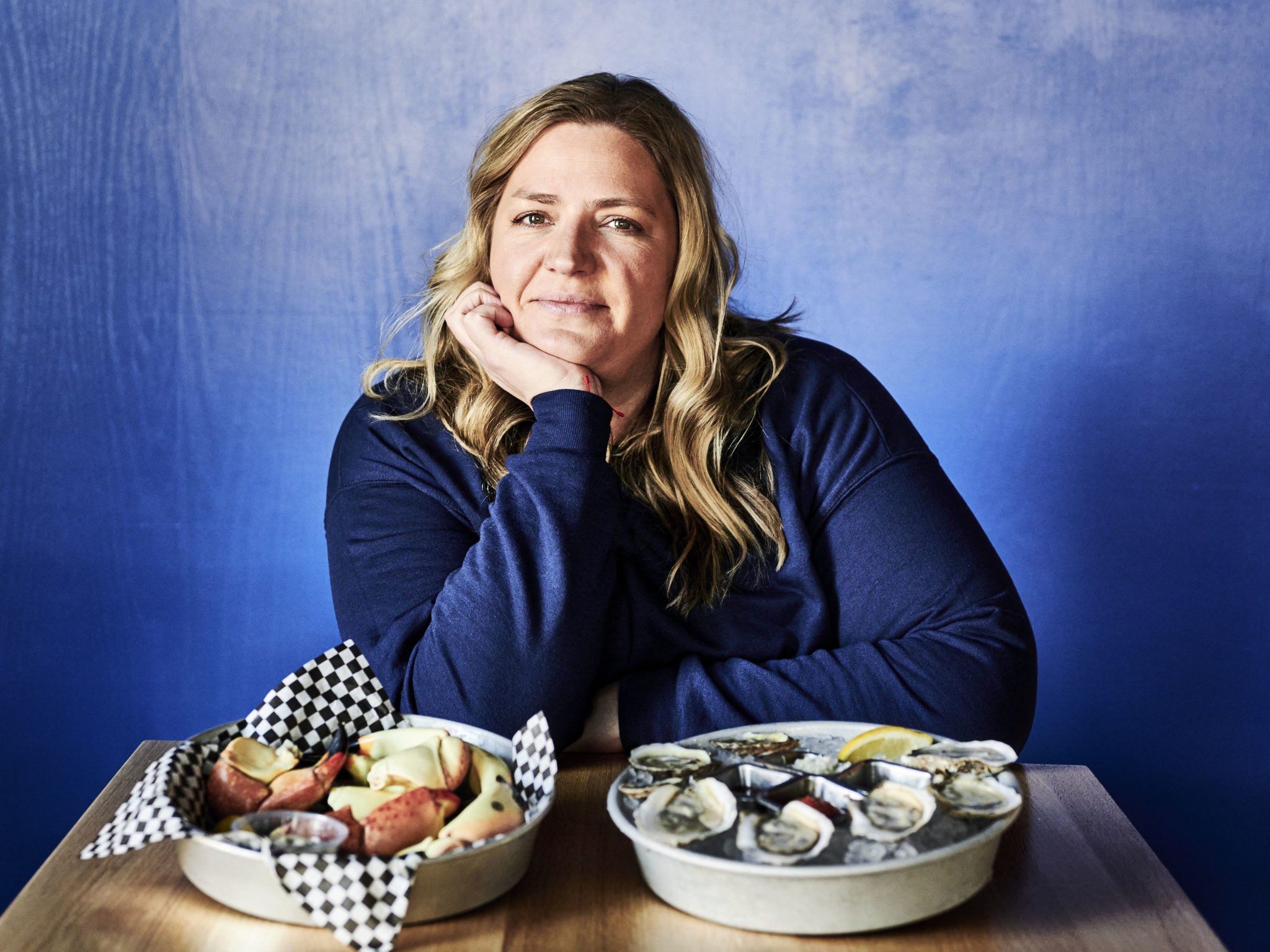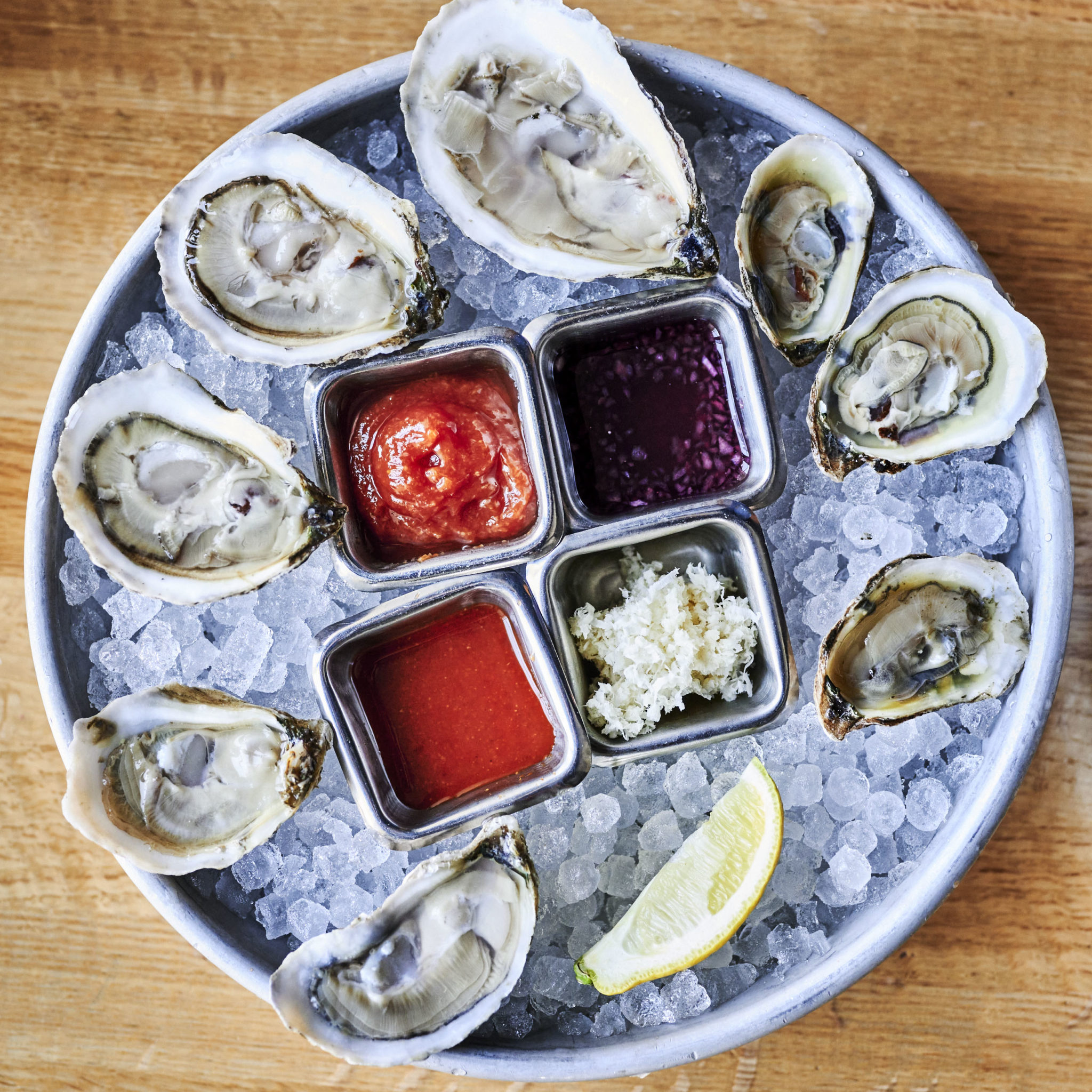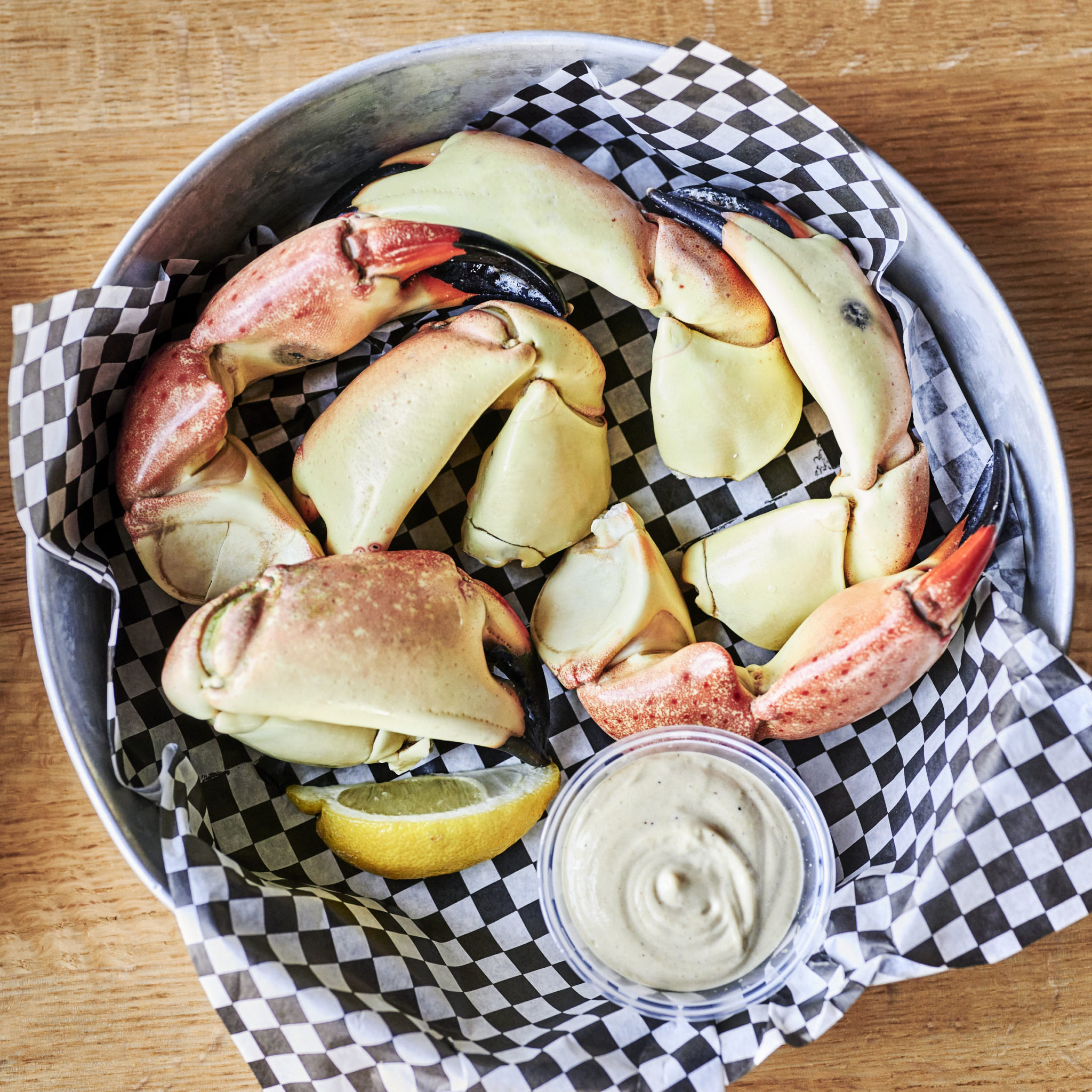Coastal seafood in the Midwest: A Q&A with the executive chef of Hazel’s

When the restaurant formerly known as Hazel, Ravines & Downtown opened in the northern Detroit suburb of Birmingham in late 2018, the intended goal of partners Beth Hussey and chef Emmele Herrold was to provide a little bit of something for everyone — to be a neighborhood kind of place where your picky aunt would be just as happy choosing from the menu as your adventurous and slightly bougie best friend.
The concept included a dedicated raw bar, on full display of the dining room, with an impressive array of bivalves and chilled treats from the sea.
But then, in 2019, while calibrating for a Birmingham crowd that skipped town for long stretches during the summer, the partners hit on a takeover concept so successful that the restaurant rebranded to match its demand.
Recently rechristened as Hazel’s (as the locals have been referring to it all along), Herrold and Hussey’s happy hour hot spot is emerging from the pandemic as a dedicated seasonal seafood restaurant, changing out its menu and decor every quarter to pay homage to a specific coastal region of the United States. That means Florida stone crab and Gulf Coast specialties in the winter, Baltimore-style blue crab and goodies from the Chesapeake Bay in the spring, fresh Maine lobster and fried clams during the summer, and king and snow crab from the Pacific Northwest in the fall — all served in a casual environment designed to transport diners to the respective region.
We caught up with Herrold by phone to chat about her restaurant’s pivot to seasonal seafood, sourcing challenges and improvements, and what it means to eat from the coasts in Michigan.

This conversation has been lightly edited for brevity and clarity.
Frame Stories: Tell me about the initial desire to have fresh shellfish front and center at what was intended to be a casual neighborhood restaurant.
Emmele Herrold: The idea of being able to see the raw bar and know how oysters are shucked, what they look like, how they’re stored — we really wanted to showcase that and show people that we’re doing it beyond just having one oyster. Not that people who don’t have it displayed are doing it wrong, but it shows people that we put a lot of time and effort into it. We wanted to focus on giving people variety from both coasts and different flavors. Luckily for us, there are a lot of people farming them and it’s easy for us to get them and be proud of what we’re serving. Having it out on display and being interactive shows people that might be otherwise intimidated by oysters. We want it to be known that it’s something you can eat every day.
FS: How did the role of shellfish grow at Hazel’s into being one of its defining offerings?
EH: We started our Lobster Pound the summer of 2019, before the pandemic, when we realized that Birmingham has a very different clientele than we were used to. They go out of town for the summer a lot. We wanted to bring people in, maybe people who didn’t go to Birmingham often. So we decided to focus on Maine lobster during the summer lobster season and redecorated the restaurant to match. It worked. The demand for that was so crazy. People have this opinion that everyone in Birmingham is fancy, but that’s not the case. Everyone likes to roll up their sleeves. We were doing seafood but with checkered tablecloths and people loved it. This is a market that we don’t see at all. We have the high-end seafood restaurants and some smaller ones, but, clearly, people wanted seafood in this building and we realized we could corner the market on that casual version.
We went back to our normal menu but then in the winter it was like, “Wait, if lobster is so successful, maybe stone crab would be, too?” So we did that in the winter and the demand for that was as insane as lobster.
FS: Are there different considerations you need to make for each region?
EH: It’s funny because an operator may do the considering first before they decide to do it. I tend to decide and then figure it out. It’s worked out well so far. But especially blue crab: 2021 was our first one, and not only did I not have a source, but it was a pandemic. So I’ll call directly to someone in Chesapeake Bay and just ask, “Do you have them?” I’ll sometimes order online. For sourcing, I’ll sit down with Motor City Seafood, where I get a lot of my seafood, and see what they can get. But it is a challenge especially because we try to get it fresh and alive. With blue crab especially, I’ll get a bushel of blue crab and half of them sometimes don’t make it. And it’s not inexpensive. But we know to do it the way we want to be proud of, we have to take those risks. We couldn’t do it if we were cutting corners.
FS: Are the cultures of each region different in any way, and if so, how do you honor that at Hazel’s?
EH: I would say the Pacific Northwest is culturally most different from the other three menus we do. The Pacific Northwest isn’t necessarily known for specific dishes as much as influence from other places. That one is where I become most creative with the dishes. Other than highlighting the crustaceans, I have a little bit more creativity as far as the way we serve them, because it’s not as specific. Lobster Pound is what we started with and it was so easy for me to see exactly what it felt like driving up the coast of Maine and stopping on the side of the road to sit at a picnic table with a whole lobster and fried clams. So many people who come in have had those kinds of experiences. And same with Florida. There’s such a huge influence here because people go to Florida all the time. So what I’m trying to do is embrace the culture, embrace what you would have if you were sitting down there, rather than reinventing the wheel for my own ego. It’s not just feeding people. We want to invoke a feeling reminiscent of a time where they may have been at these places.

FS: You’ve been in the restaurant business locally for more than a decade now. How have you seen the industry in metro Detroit shift in its relationship to shellfish? There are so many trends now that you wouldn’t necessarily expect here: lobster rolls, seafood boils, oysters…
EH: I think there are a couple different facets. One: Our ability to get fresh seafood is better. We have more local companies selling fresh seafood. I could credit it all to Matt at Motor City Seafood. Having them here doing what they’re doing is amazing for our industry. Don’t get me wrong, Fortune (Fish) is great too. But when Motor City came on the scene, things got a little easier. Having the local people who you trust to get fresh ingredients is step one. You don’t have to rely on big-box companies in fear it won’t be a good product. A decade ago getting oysters was much more challenging. The best part is Motor City delivers seven days a week. They deliver oysters on Sundays. It’s amazing I can get fresh seafood on a Sunday.
Two: having places like Hazel’s and other places that are showcasing them and showing people it doesn’t have to be a once-a-year kind of thing to eat. You don’t have to sit down at a fancy white-tablecloth place to have lobster tail. We have places like Voyager and here and Mink that are showcasing them. The more places that are doing it, the more approachable it becomes just by nature.
FS: What does it mean to be a coastal seafood restaurant in a place like Michigan? Oysters and lobster are certainly much better for the environment than cattle production, but how do you square that with the environmental impact of having all this stuff flown in?
EH: The “sustainable” word is used a lot and I think sustainability is important. Oysters and all bivalves are actually really good for the environment. They certainly take up less space to grow. I also think a lot about the people fishing them, growing them, harvesting them — that’s a livelihood. All the places I’ve visited are towns built solely on this industry. If they’re not flown out, where do they go? Me having a really good purveyor like Motor City Seafood, which has great relationships with small farmers, we’re able to buy from them and sustain them. The jet fuel being used to getting them here — they’re coming anyway. And if I’m serving more seafood, Michiganders are maybe eating less beef. Not to say they can’t eat beef. These farms — and “farm-raised” isn’t always bad when it comes to seafood — are run by families who are great at what they do. We’re not begging people to give us something they can’t supply. And let’s face it, supply and demand exists. If we’re not buying it ethically, someone else is going to buy it unethically. If I know I’m getting my lobster from a union of lobster fishermen, which I do, then I know where it’s coming from. I’m communicating with actual humans doing this for a living and I can be proud to sell their product.
FS: The Midwest has historically been viewed as a place where the diners are less adventurous than those on the coasts. Is that fair to say still? How do you market a seasonal seafood restaurant to a dining public that may still be hesitant to try a raw oyster?
EH: I don’t think it’s fair to say that Midwesterners as a whole aren’t adventurous. I think they haven’t been given the opportunity. It hasn’t been hard to market it. People come. Granted, there are people who won’t come to a seafood restaurant because they don’t like seafood. But there’s enough out there that do and fill us up every weekend. And then, in the last decade, there are more of us working in the business showcasing our skills and giving it to people. A decade ago, we weren’t known as a chef-driven town and now we are. If you build it, they will come. This community is pretty mighty. We have a lot of people who all kind of know and follow and respect each other and we’ve become a community of people proud of giving the guests what they’ve always wanted but just didn’t know they could ask for.




